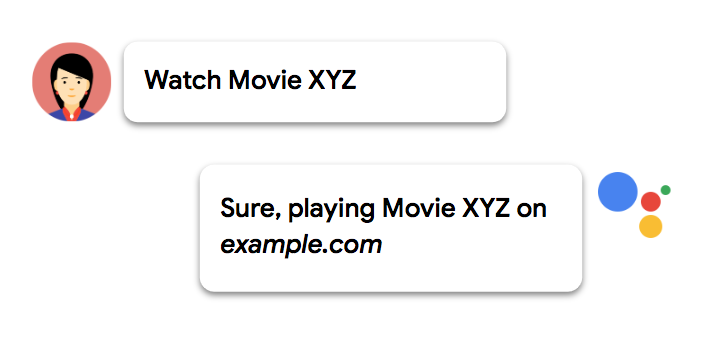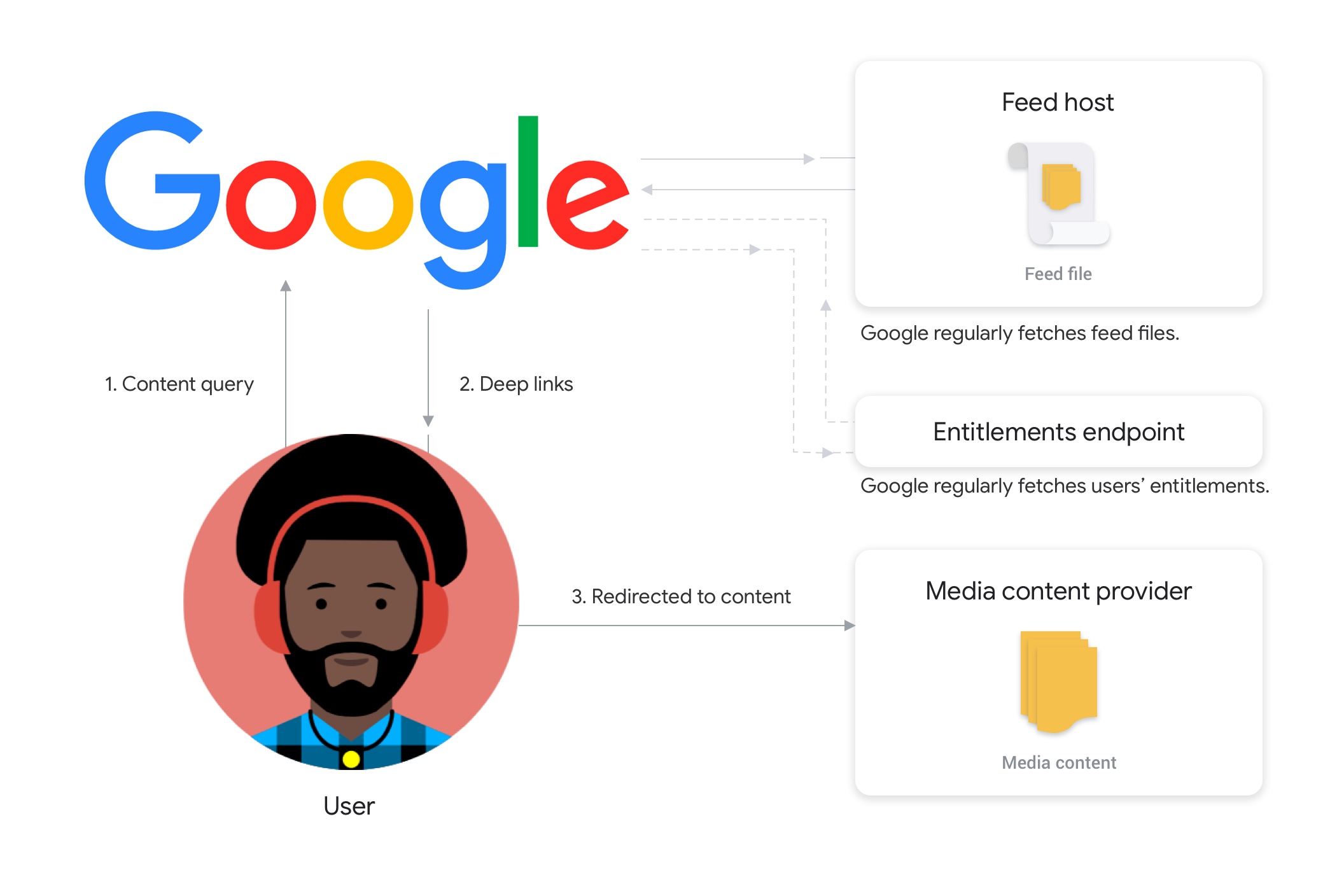Les flux d'actions multimédias vous permettent de décrire vos contenus multimédias à Google. Cela permet aux utilisateurs de découvrir vos contenus dans la recherche Google et l'Assistant Google, et de lancer la lecture directement dans votre application ou votre plate-forme.

Figure 1. Actions multimédias dans l'Assistant Google
Les actions multimédias sont basées sur un flux, qui contient les détails de votre catalogue multimédia. Un flux est un objet JSON qui contient une collection d'entités. Une entité est un objet schema.org qui représente un élément de votre catalogue: un épisode de série TV, une série TV, un film, une chanson, un album, etc.
Pour que Google puisse obtenir votre flux, vous devez le stocker dans un fichier et héberger ce fichier à un emplacement où Google peut y accéder. Pour s'assurer que votre contenu est à jour, Google récupère régulièrement le fichier de flux auprès de votre hôte.

Figure 2. Flux des actions multimédias.
Pour intégrer votre service aux actions multimédias, procédez comme suit:
- Comprendre les exigences et collecter des informations sur vos contenus multimédias
- Comprendre la structure du flux
- Créez un exemple de flux et remplissez-le à l'aide de votre catalogue multimédia.
- Hébergez le fichier de flux à l'aide d'un service de stockage cloud ou d'un système d'hébergement public/privé.
- Réalisez la checklist de qualité et contactez Google pour envoyer votre flux.
- Créez un projet Actions on Google pour surveiller l'état du flux.
